THE FACULTY OF SENSING – Thinking With, Through, and By Anton Wilhelm Amo
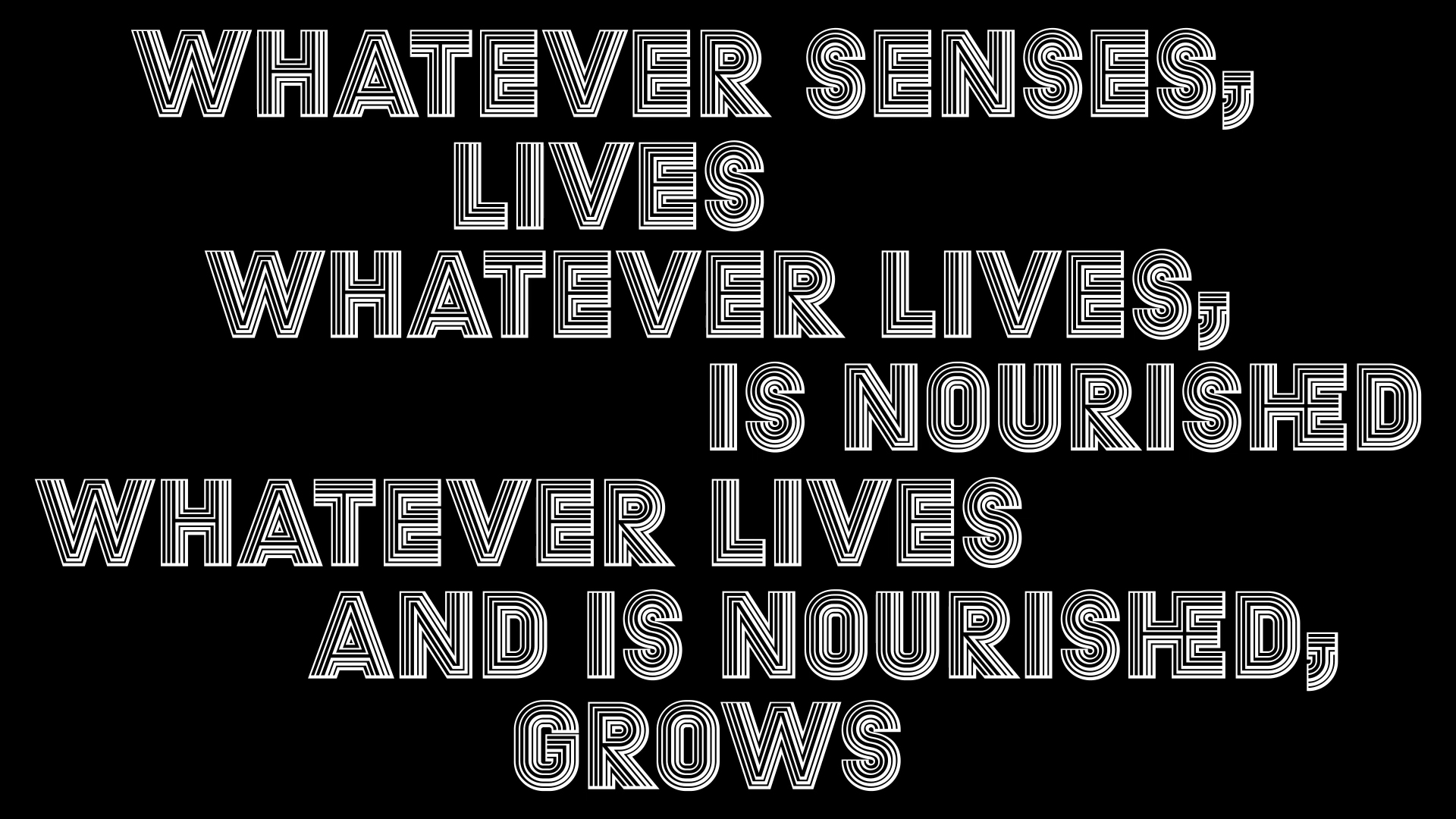
research And exhibition project
By Bonaventure Soh Bejeng Ndikung, co-curated by Jule Hillgärtner and Nele Kaczmarek
04.12.–28.02.2021 (extended)
WITH Akinbode Akinbiyi, Bernard Akoi-Jackson, Andcompany&Co., Anna Dasović, Jean-Ulrick Désert, Theo Eshetu, Adama Delphine Fawundu, Lungiswa Gqunta, Olivier Guesselé-Garai, Patricia Kaersenhout, Kitso Lynn Lelliott, Antje Majewski, Claudia Martínez Garay, Adjani Okpu-Egbe, Resolve Collective, Konrad Wolf
SAVVY Contemporary respects the current measures to contain the COVID-19 pandemic. We wish everyone good health and safety. You can connect with this project sonically and visually through our window showcase as well as through the digital platform facultyofsensing.savvy-contemporary.com.
VISIT ONLINE
Come visit the online platform for The Faculty of Sensing: facultyofsensing.savvy-contemporary.com
(If you allow access to your microphone, you can talk with other visitors)
PLATFORM Common Garden developed by Constant Dullaart
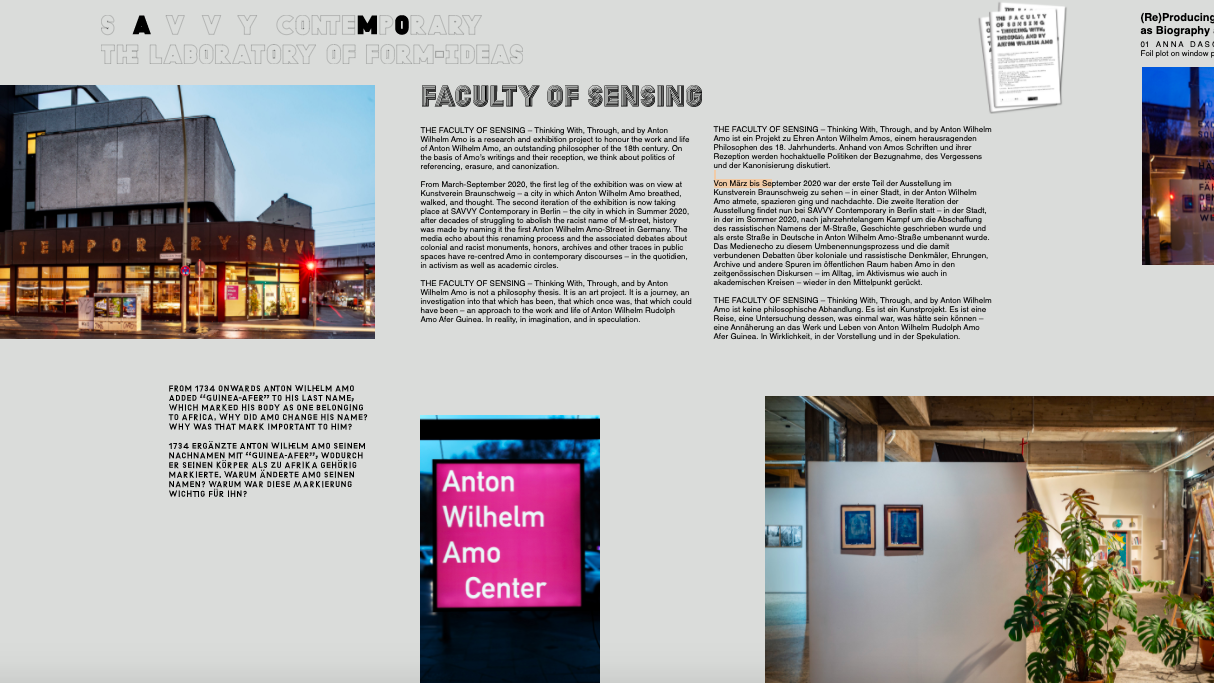
THE FACULTY OF SENSING – Thinking With, Through, and by Anton Wilhelm Amo is a research and exhibition project to honour the work and life of Anton Wilhelm Amo, an outstanding philosopher of the 18th century. On the basis of Amo’s writings and their reception, politics of referencing, erasure, and canonization will be thematized.
From March-September 2020, the first leg of the exhibition was on view at Kunstverein Braunschweig – a city in which Anton Wilhelm Amo breathed, walked, and thought. The second iteration of the exhibition is now taking place at SAVVY Contemporary in Berlin – the city in which in Summer 2020, after decades of struggling to abolish the racist name of M-street, history was made by naming it the first Anton Wilhelm Amo-Street in Germany. The media echo about this renaming process and the associated debates about colonial and racist monuments, honors, archives and other traces in public spaces have re-centred Amo in contemporary discourses – in the quotidien, in activism as well as academic circles.
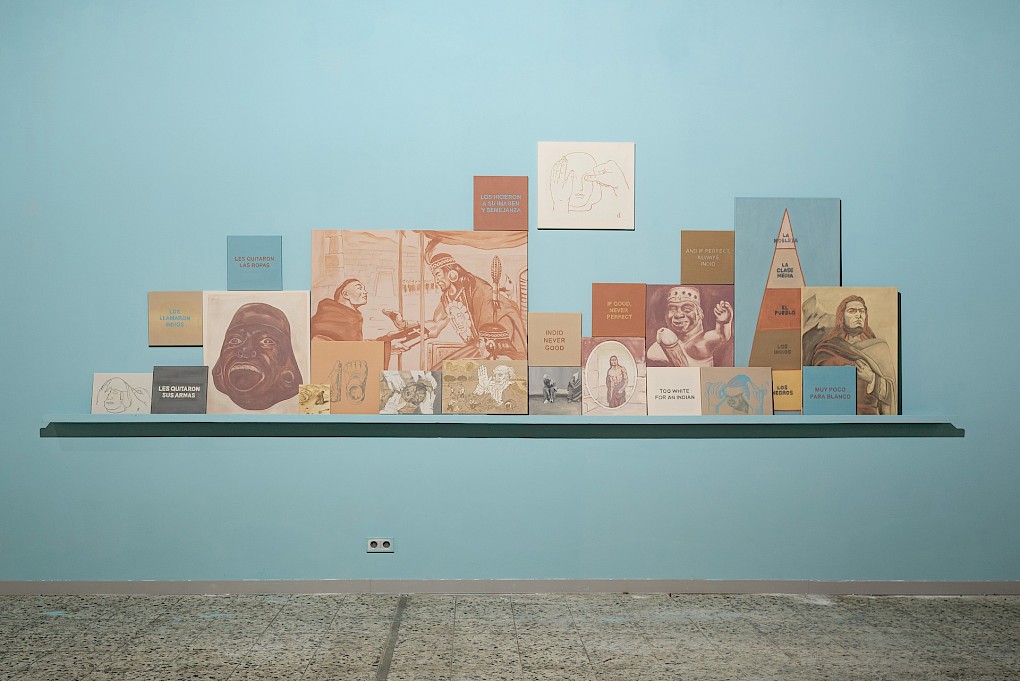
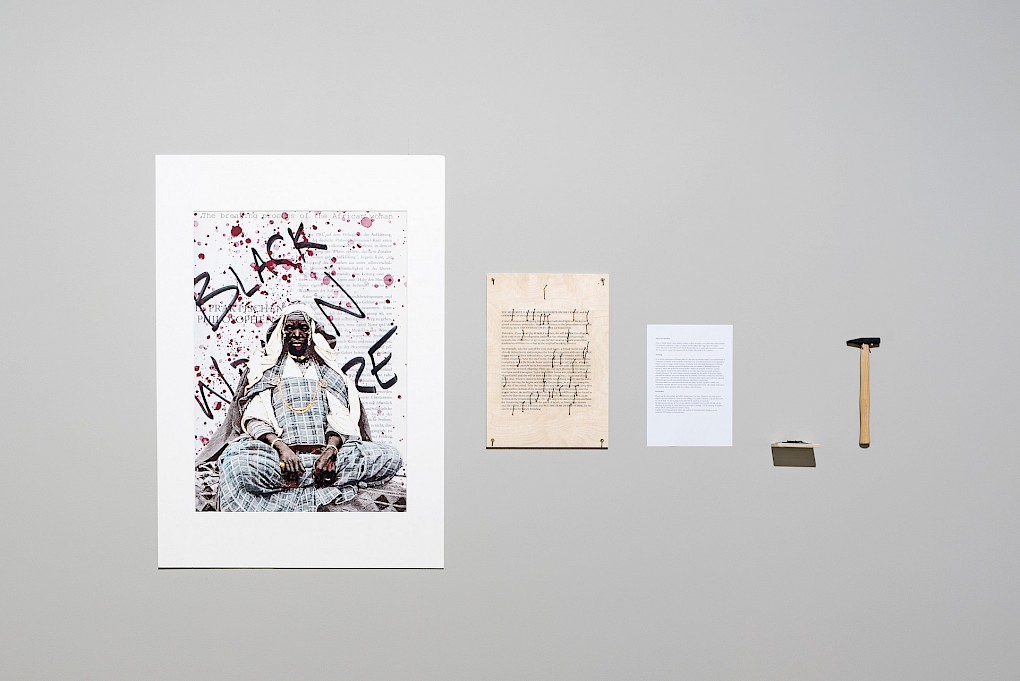
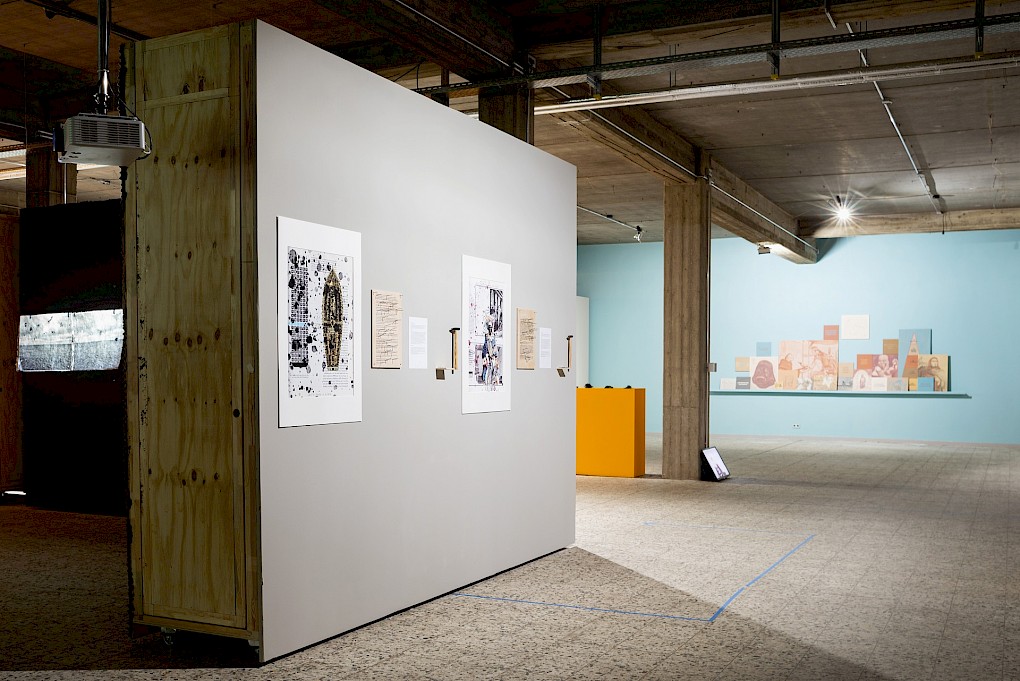
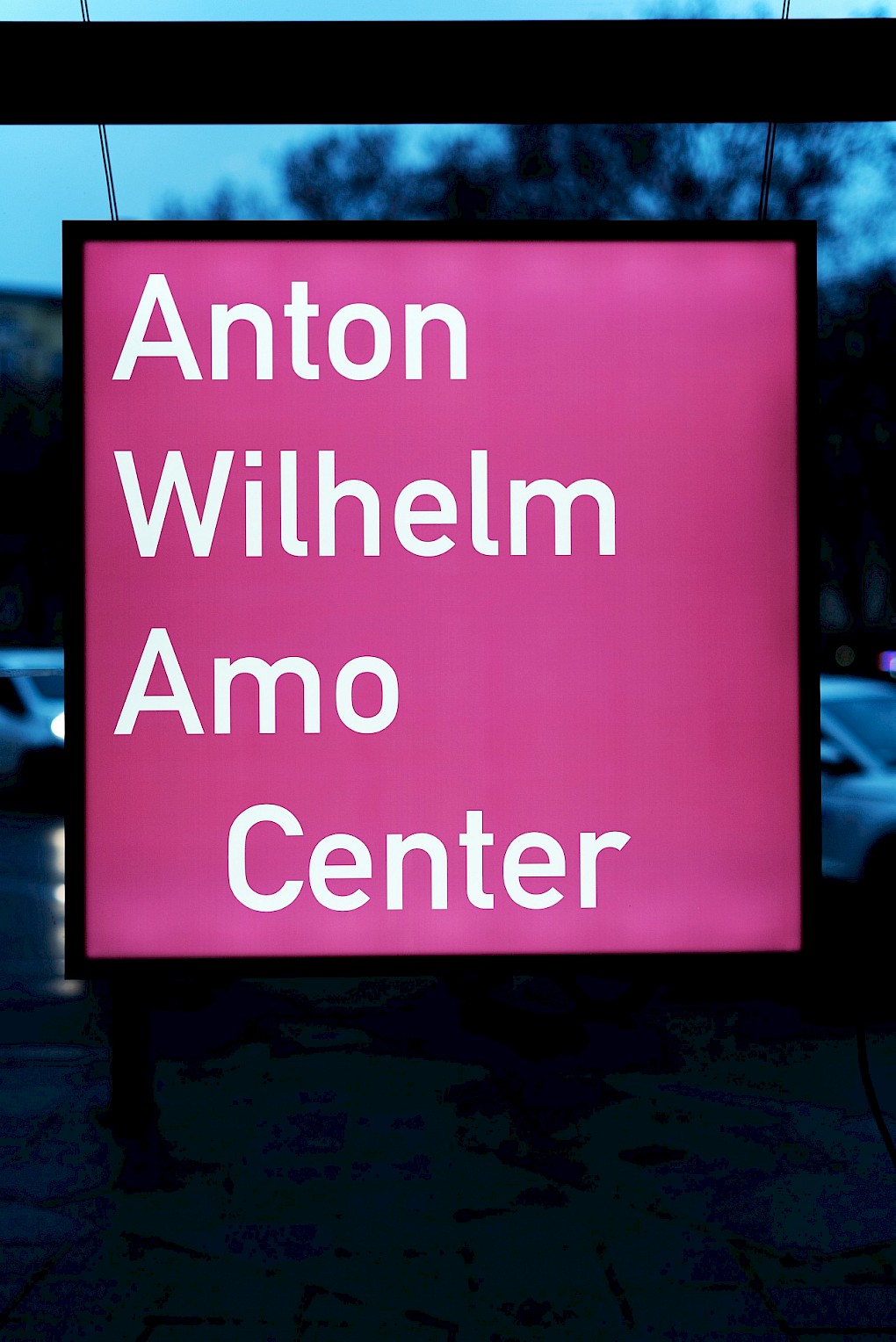
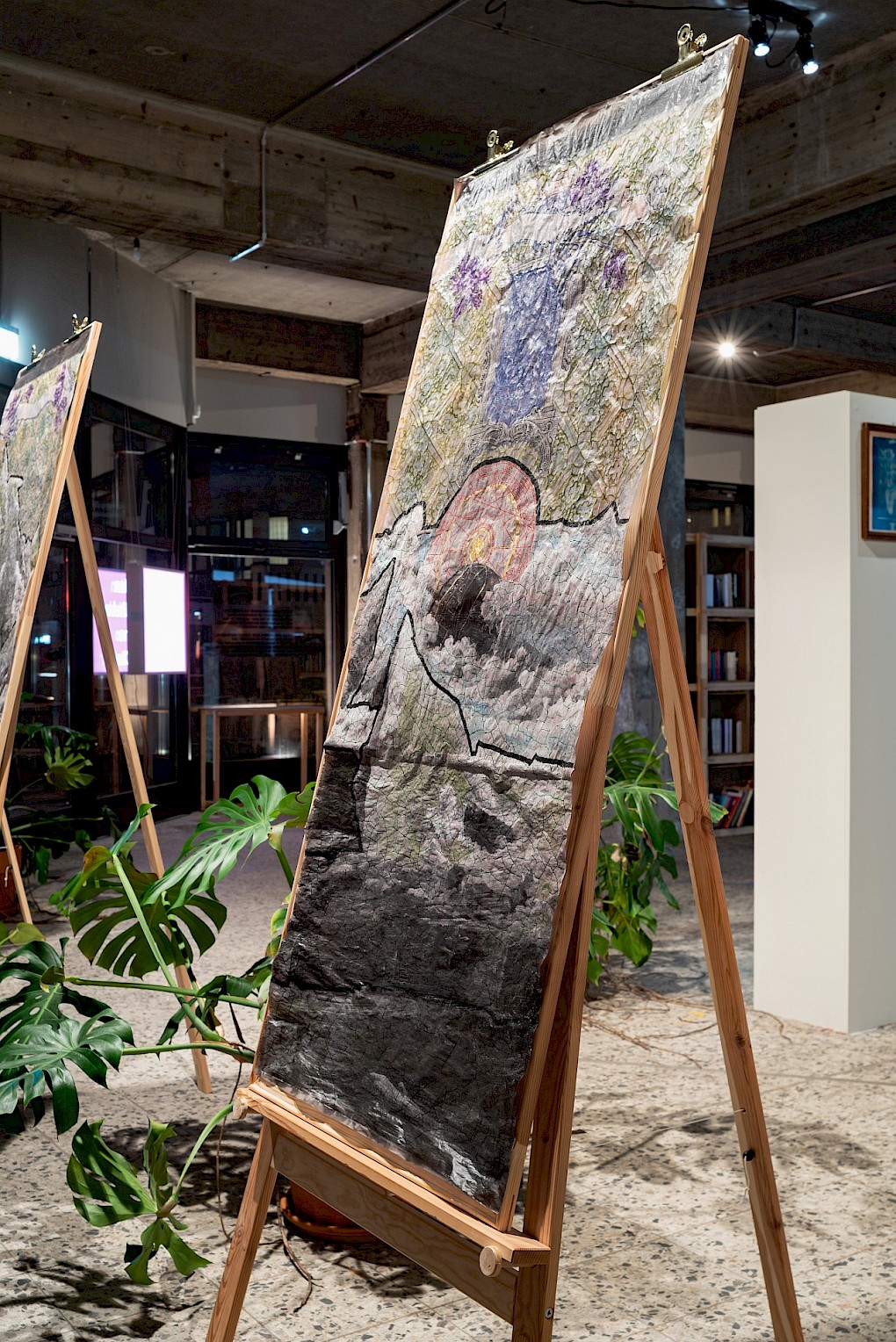
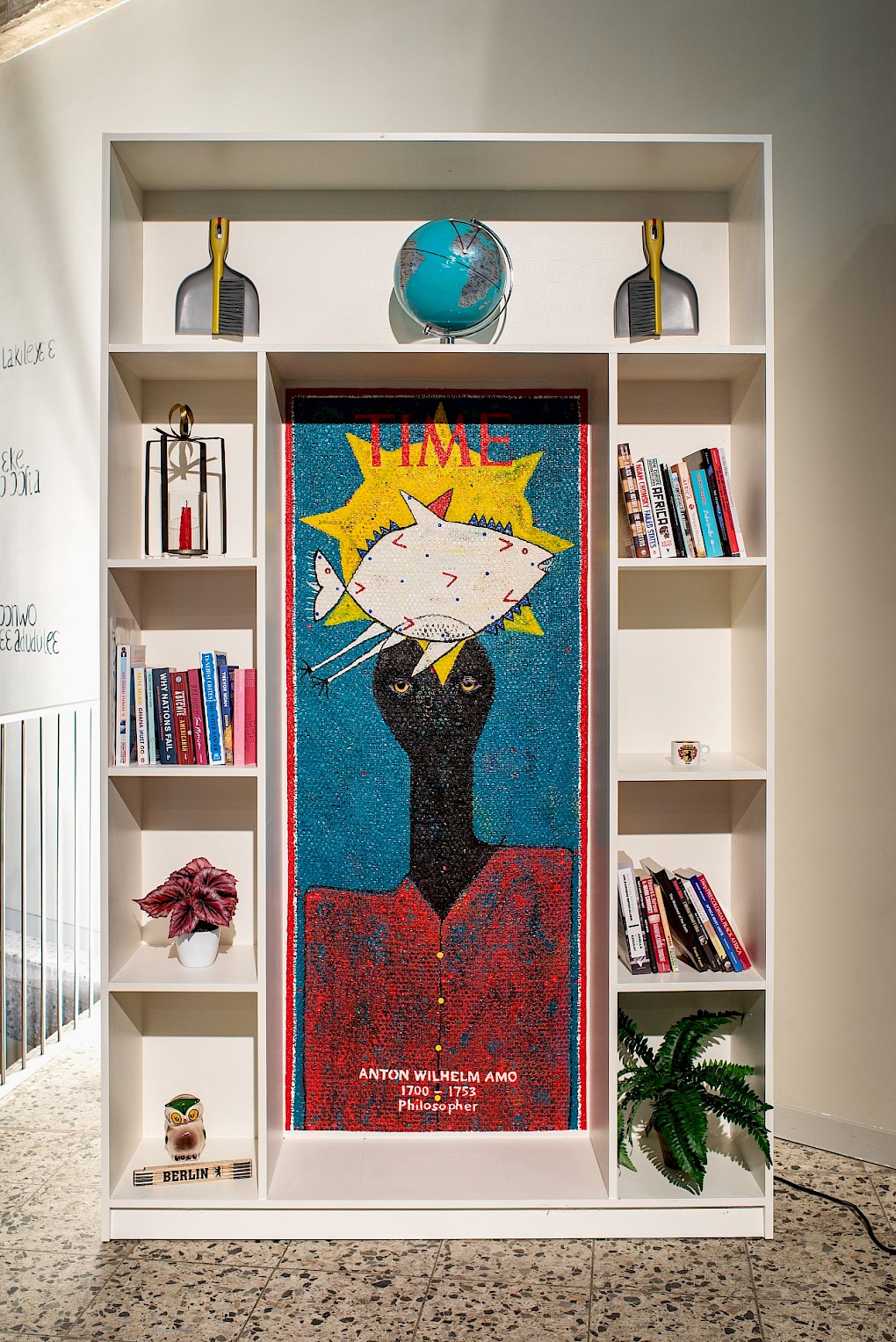
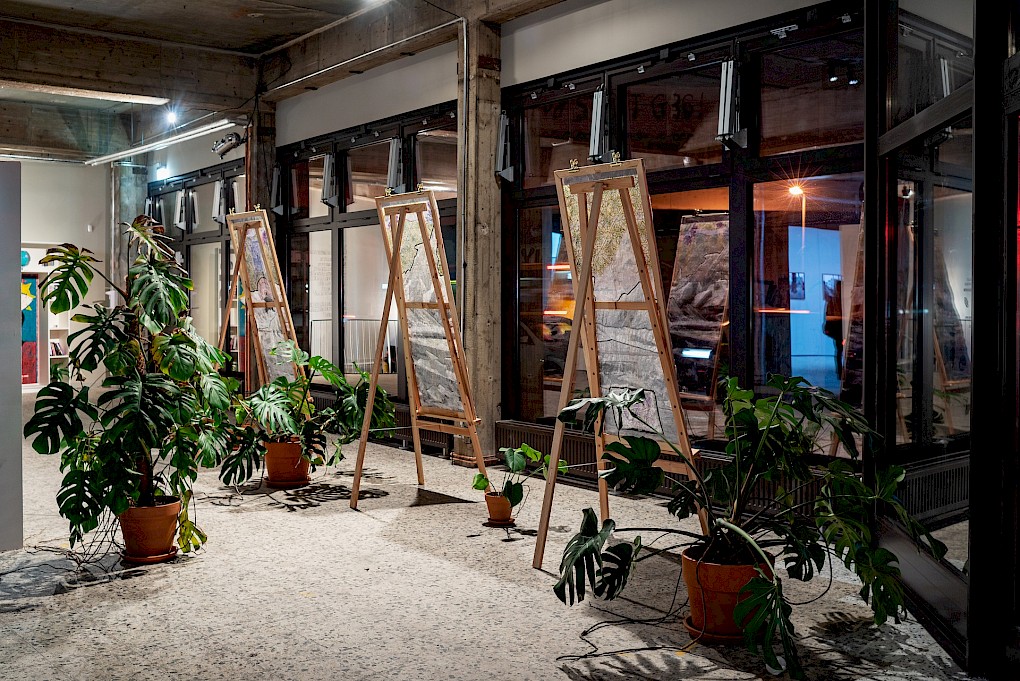
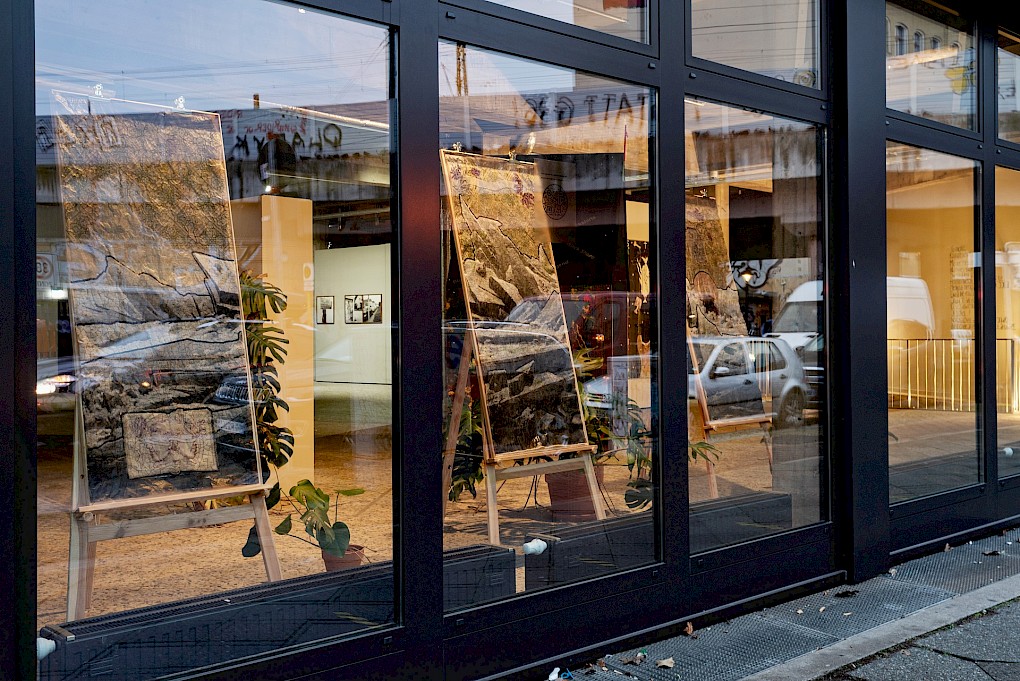
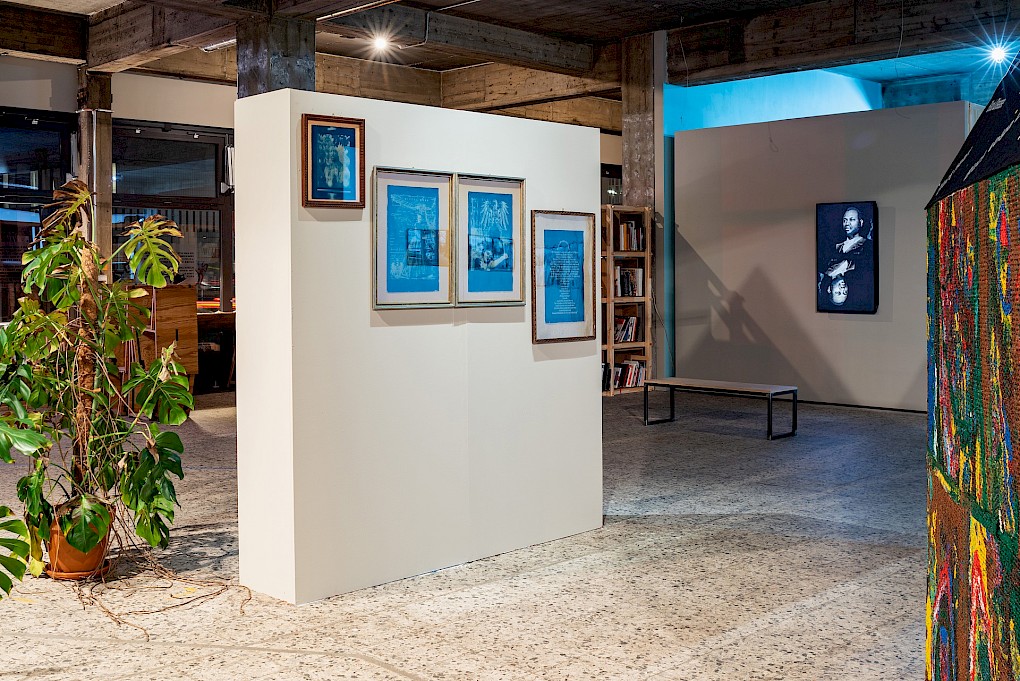
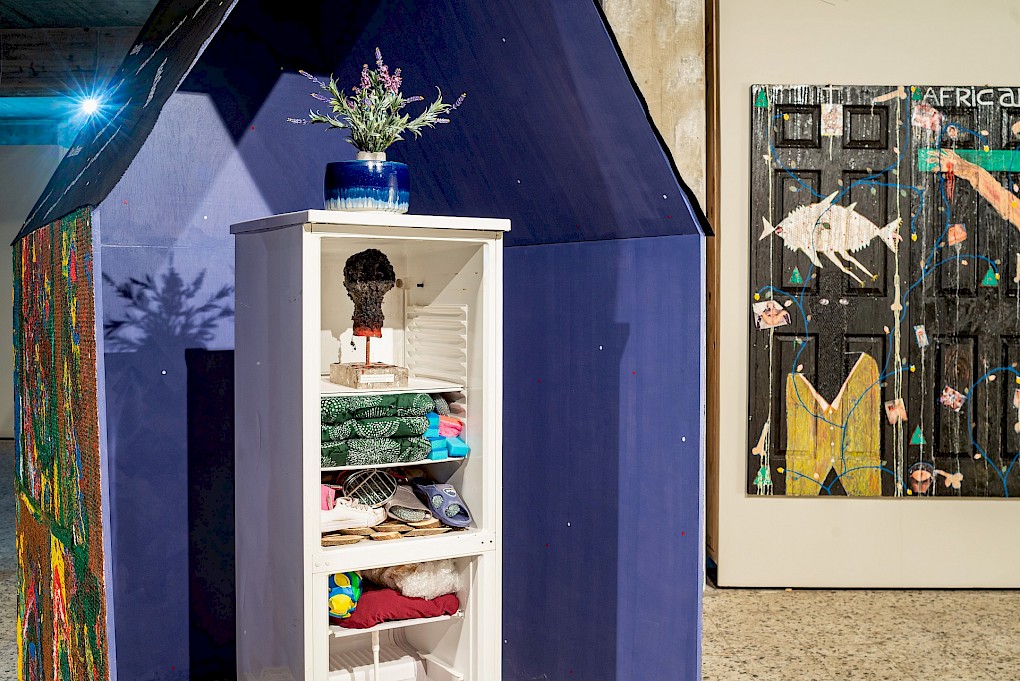
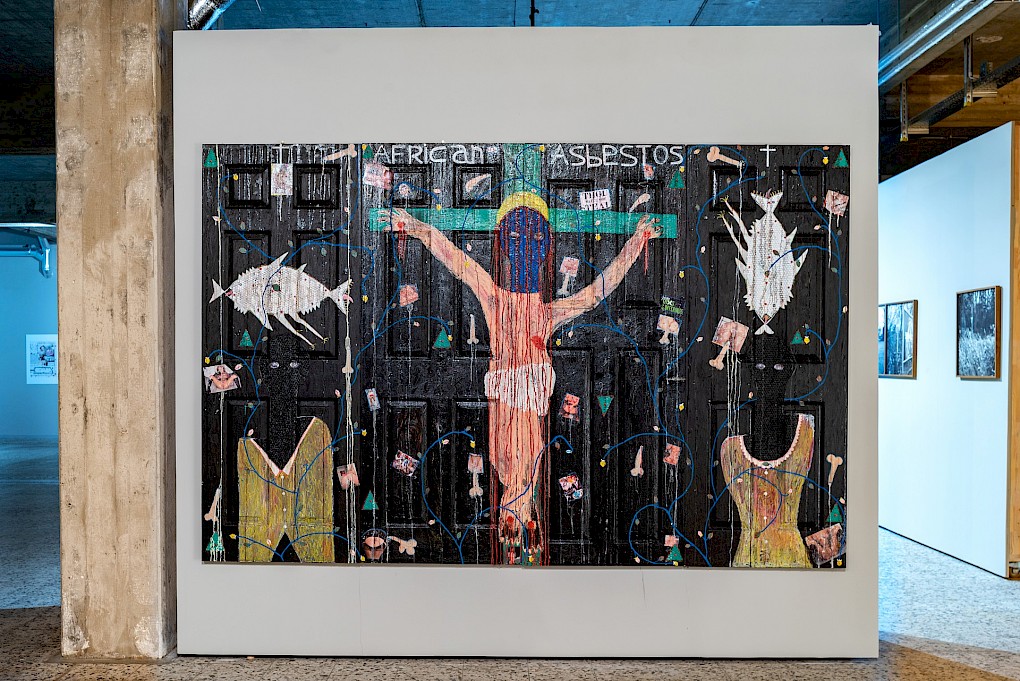
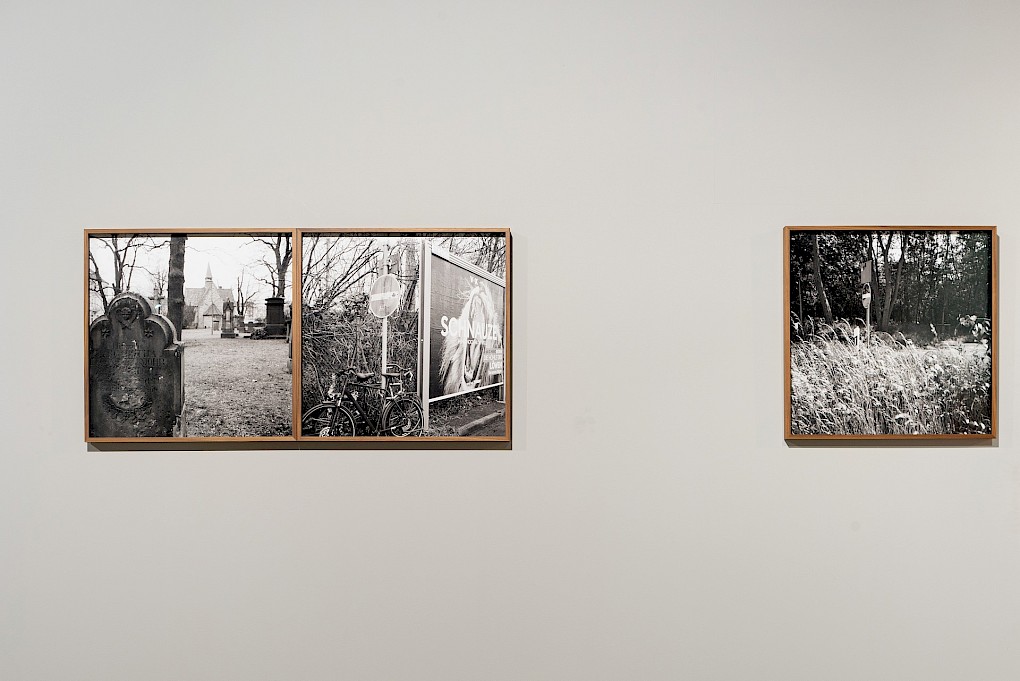
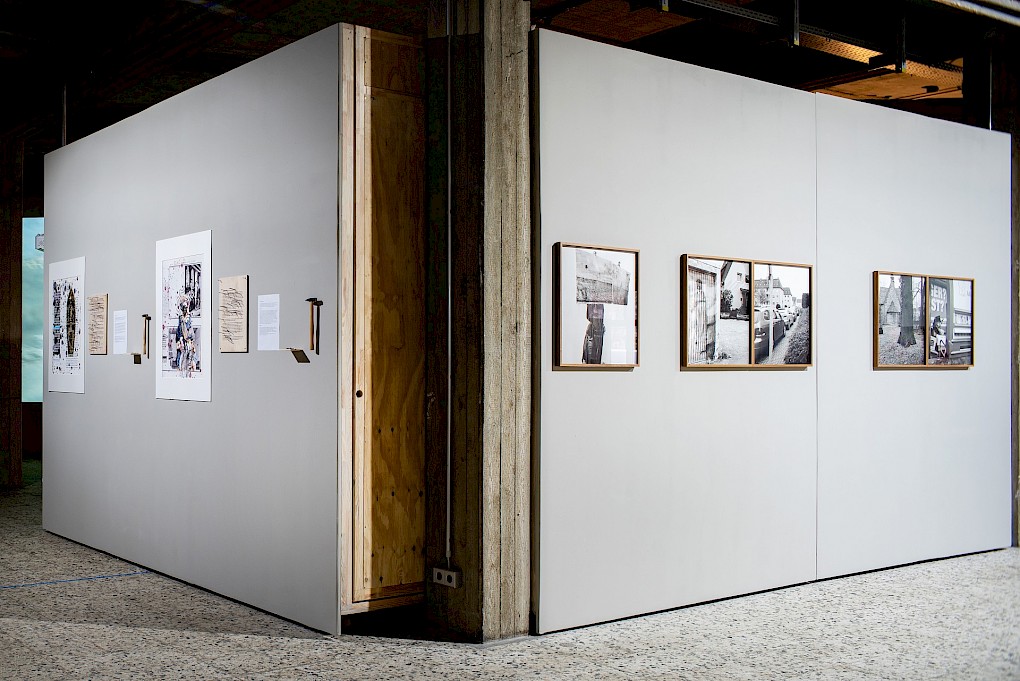
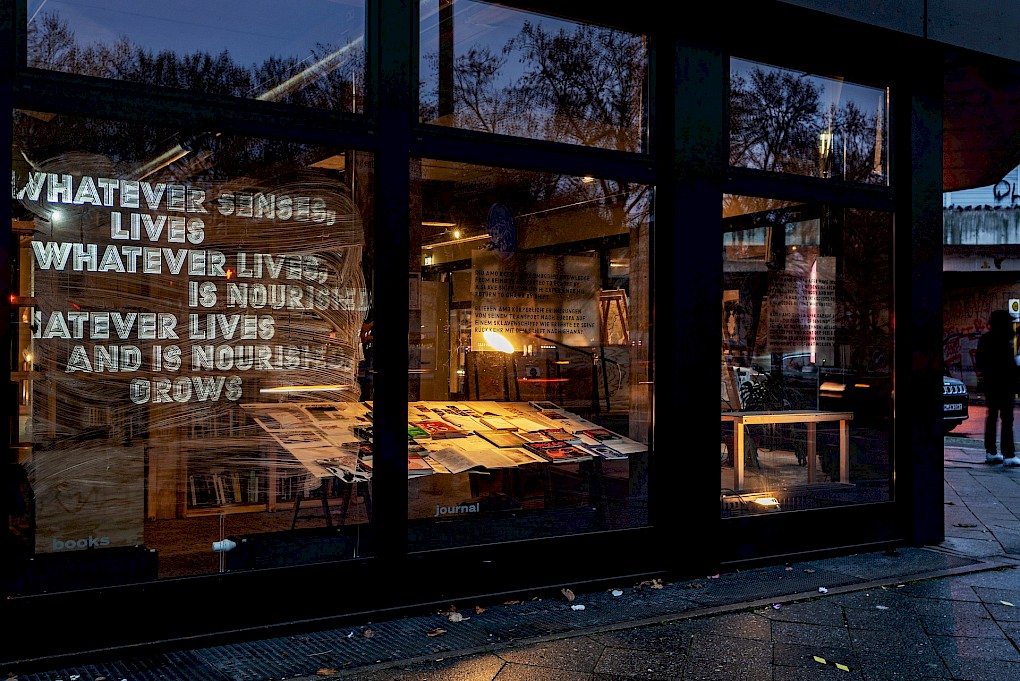
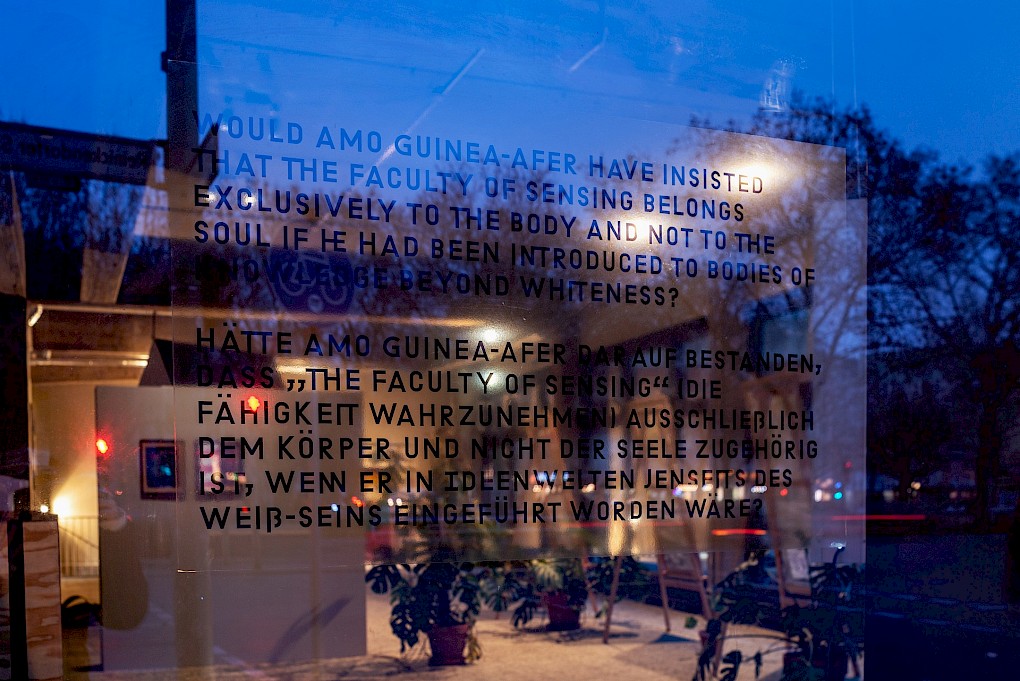
Born in 1703 in what is today Ghana, Anton Wilhelm Amo was abducted as an infant, enslaved, and taken via Amsterdam to Wolfenbüttel at the court of Duke Anton Ulrich. Upon increased racism he fled ca. 1748 to West Africa, where he died ca 1753.
With THE FACULTY OF SENSING– Thinking With, Through, and by Anton Wilhelm Amo, we are embarking on deliberations around the oeuvre of one of the most important and consequent intellectuals of the 18th century, whose work has been widely relegated to the extreme margins and actually into oblivion for what might be termed “'obvious reasons”. In a 2013 essay "The Enlightenment's 'Race' Problem, and Ours" for the New York Times' philosophy page “The Stone”, Justin E. H. Smith wonders how and why philosophers like Immanuel Kant or David Hume could afford to be so explicitly racist, at a period when a contemporary of theirs Anton Wilhelm Amo was excelling as a philosopher. The explanation for this can be found in processes of erasure in relation to what Michel-Rolph Trouillot has called “Silencing the Past”. The canon of philosophy, like other canons, is a manifestation of power. Intransparent as it seems, we do know the codes that allow certain people into the canon and leave others out. To be subjugated by gender or race, by geography and coloniality all factor into canonization processes. Consequently, we know how and why Anton Wilhelm Amo Afer Guinea never found a place in the canon of philosophy, despite making important contributions to eighteenth-century German and European philosophy. The project THE FACULTY OF SENSING – Thinking With, Through, and by Anton Wilhelm Amo is not an effort to insert Anton Wilhelm Rudolph Amo Afer Guinea into any canon whatsoever. It is, on the contrary, an attempt to decanonize the philosophical canon by “thinking with, through, and by” Amo.
16 international artists and groups were invited to respond to the philosophical thought of Anton Wilhelm Amo in largely newly produced works. Curatorially, the project charts a trajectory primarily on and around his philosophical and legal proposals in relation to the thing-in-itself, the living body and soul discourse, the legal rights of people of African origin in the 18th century as much as today, the politics of naming, as well as engage with more complexe narrations of the history of the Enlightenment project. All these being issues that Prof. Amo tackled in his academic writings.
THE FACULTY OF SENSING – Thinking With, Through, and by Anton Wilhelm Amo is not a philosophy thesis. It is an art project. It is a journey, an investigation into that which has been, that which once was, that which could have been – an approach to the work and life of Anton Wilhelm Rudolph Amo Afer Guinea. In reality, in imagination, and in speculation.
By questioning the environment Anton Wilhelm Amo grew up in and spaces that we still share with him today, Akinbode Akinbiyi embarked on a journey through the region to conduct a photographic search for vestigial remains.
Adama Delphine Fawundu shares this interest in trans-historical connections, working with water as the connecting element that flows through a spatial installation composed of photographs, videos, and an artist book. Following Anton Wilhelm Amo’s theory that it is only the living organic body that can feel and that the soul cannot, Kitso Lynn Lelliott has created a videographic portrait of environments from Amo’s life journey in Ghana and Germany. A second chapter tackles the shortcomings of re-enacting from a position of absence. Starting with targeted interrogations that flank the exhibition’s spatial course, Anna Dasović focuses on the empty spaces and deliberate omissions that have shaped Amo’s biography and perception of his work, questioning thereby the prevailing criteria of canonization.
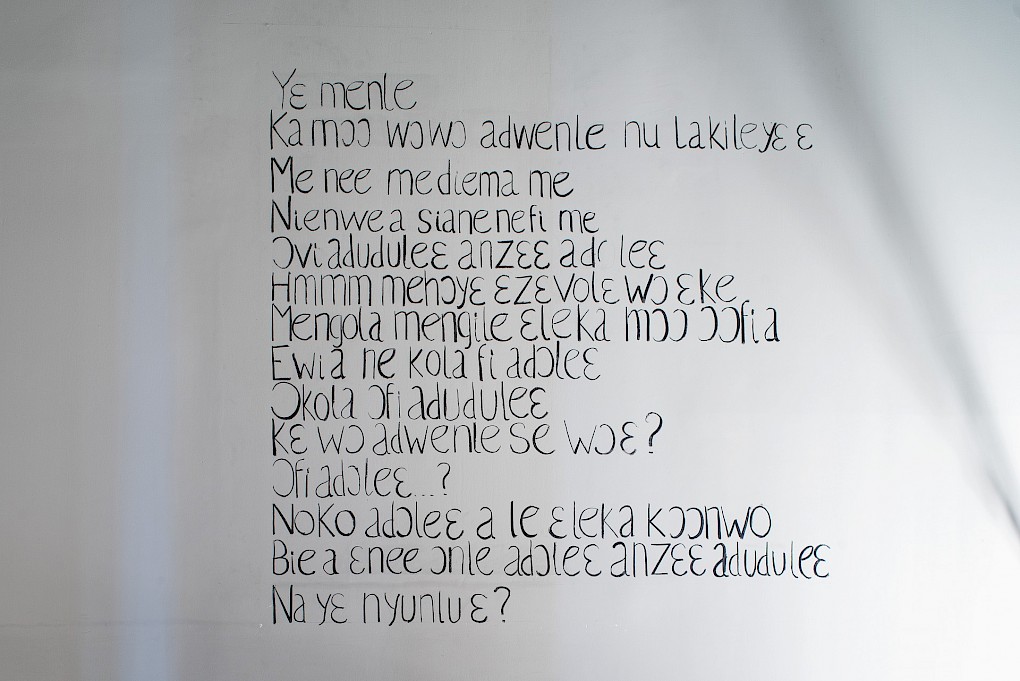
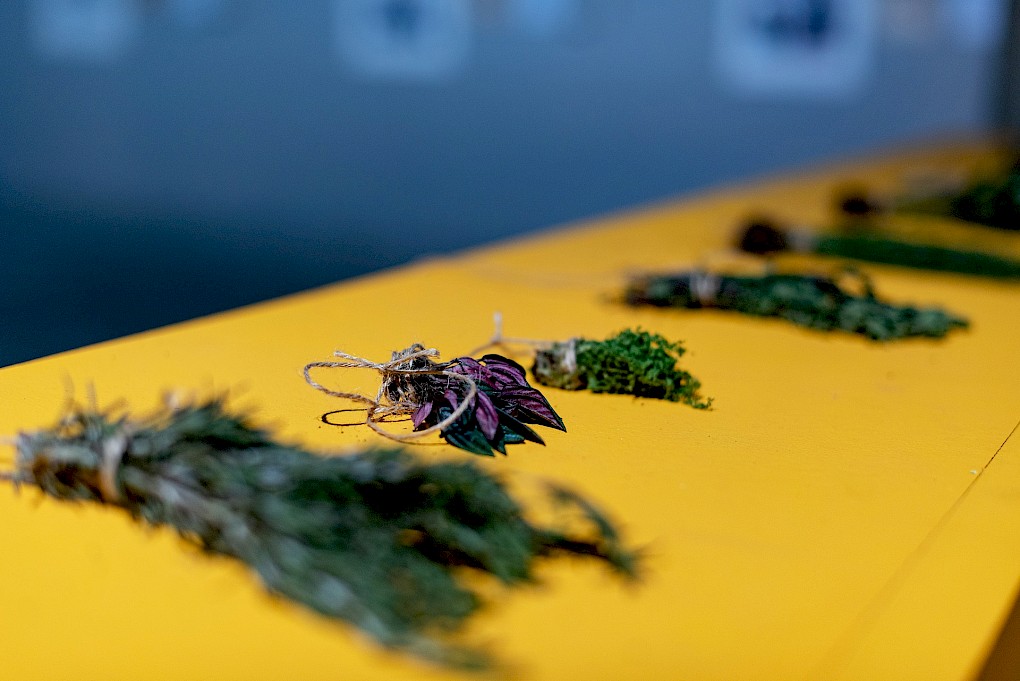
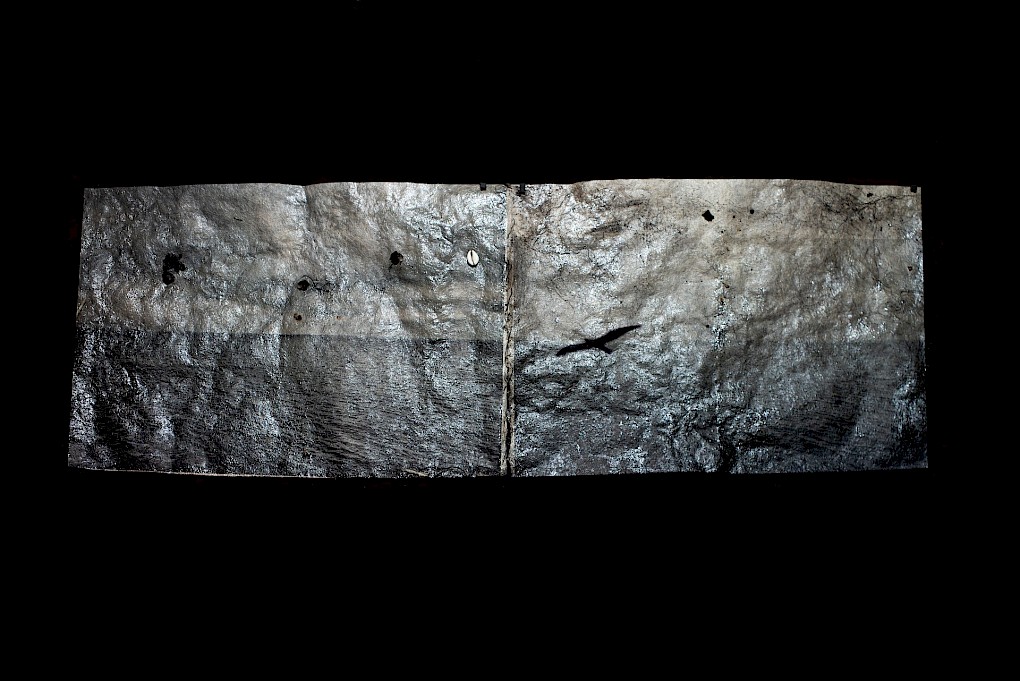
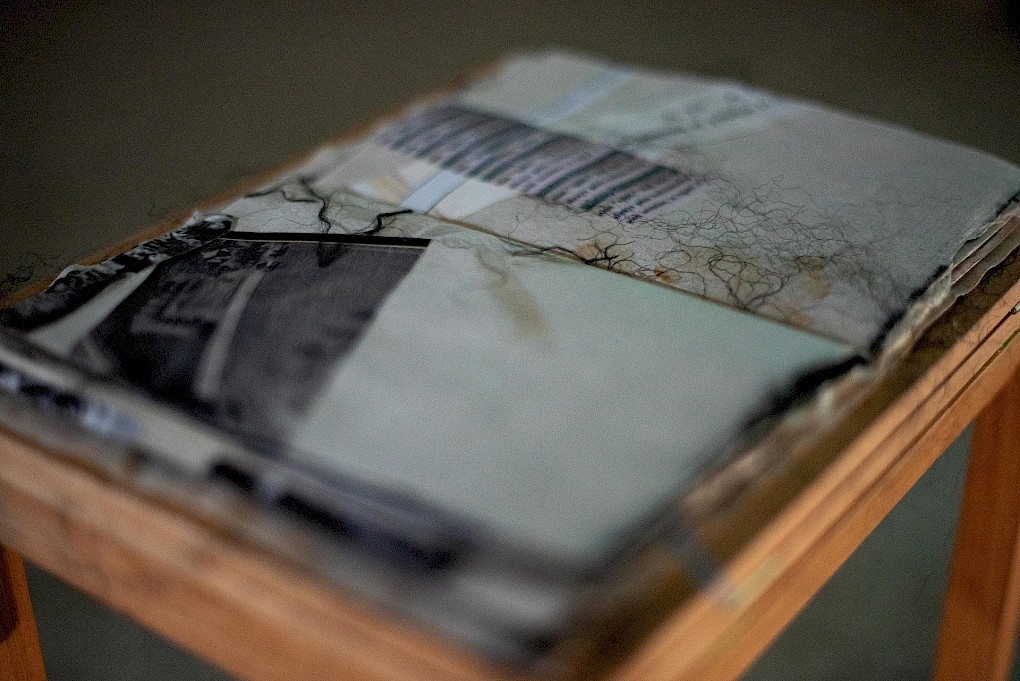
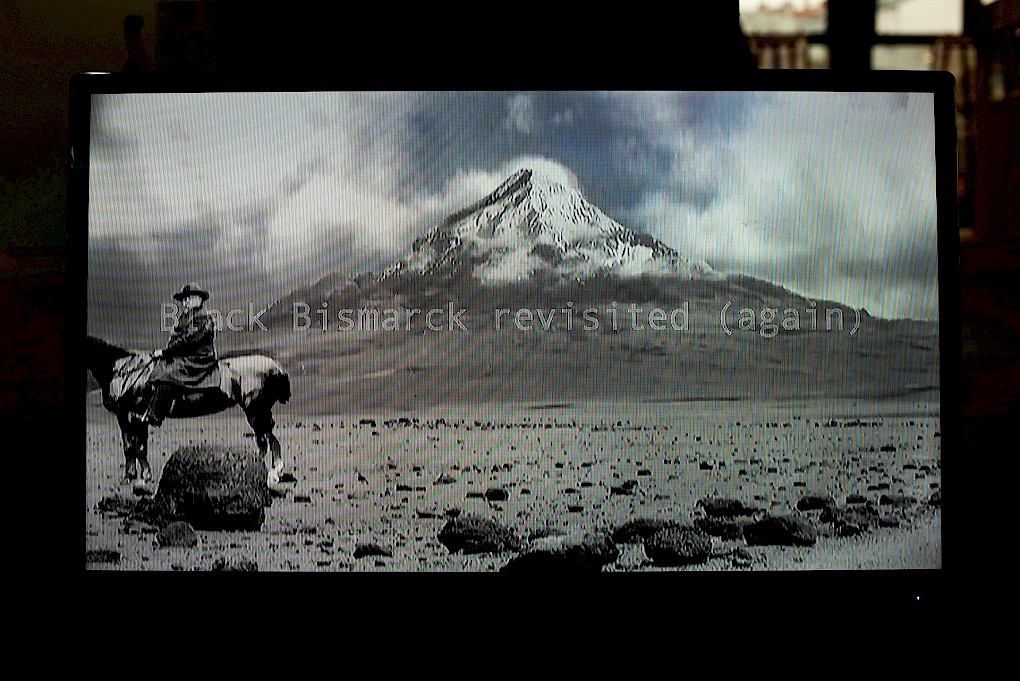
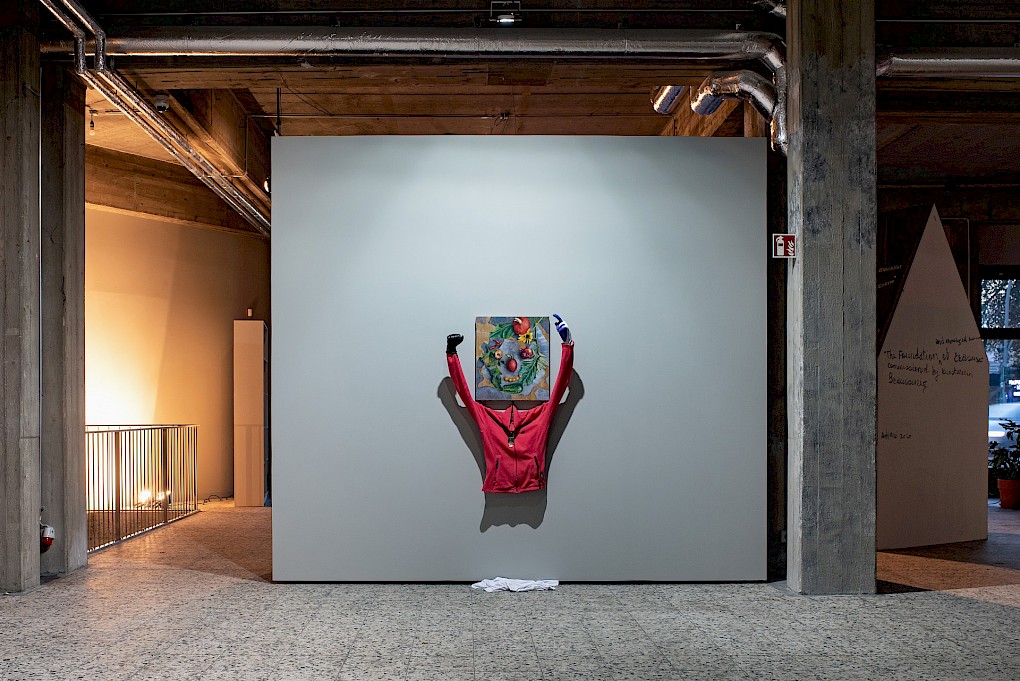
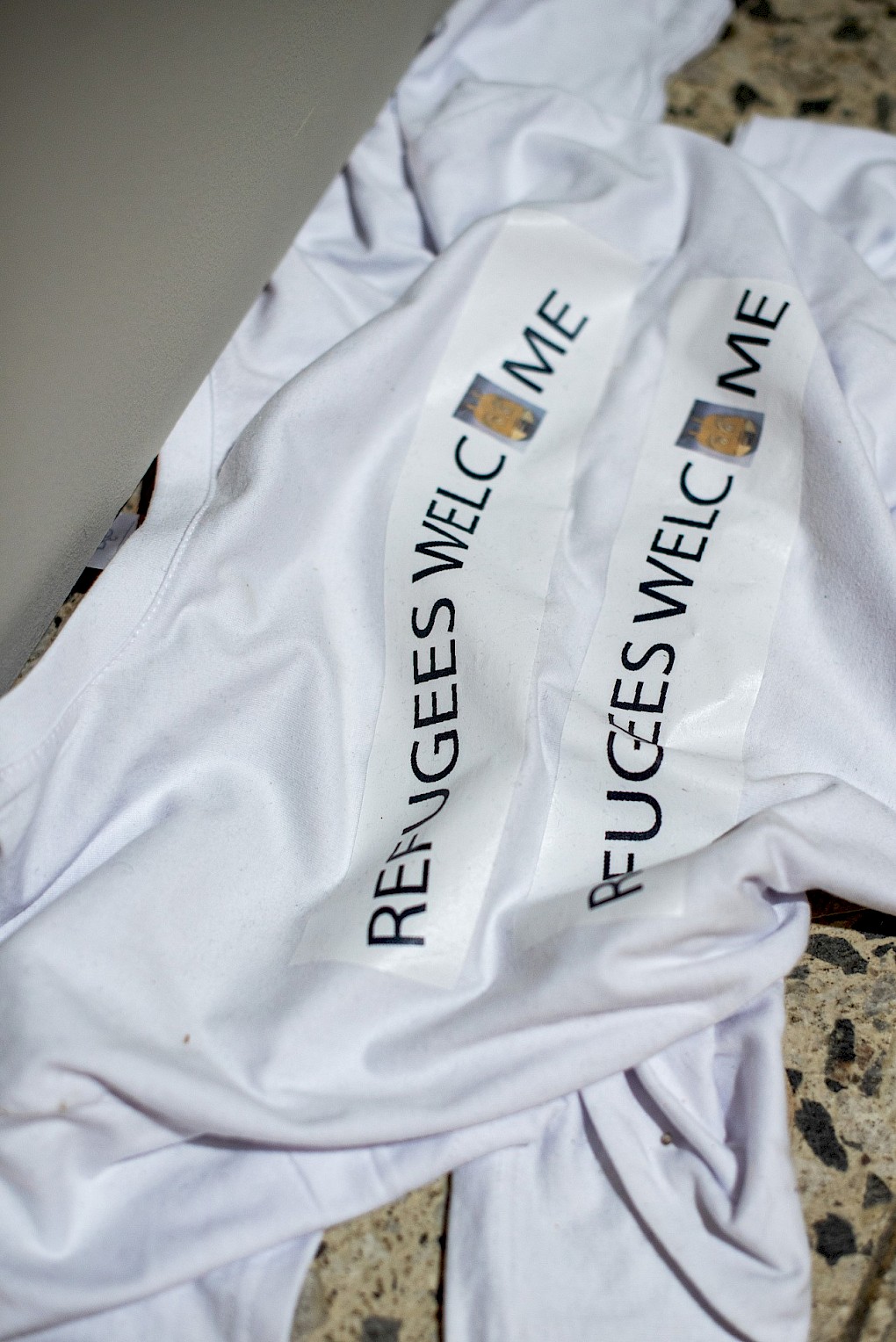
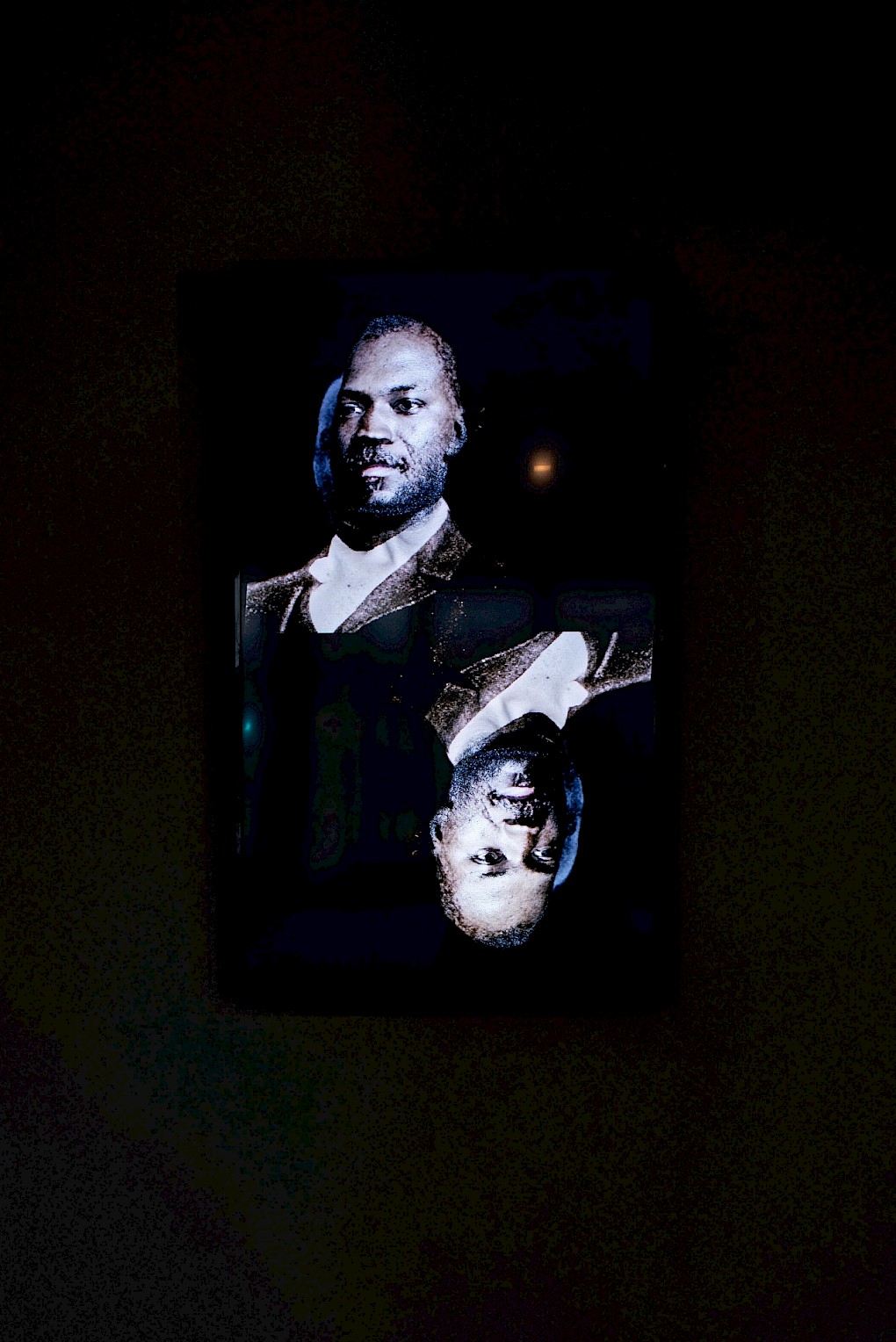
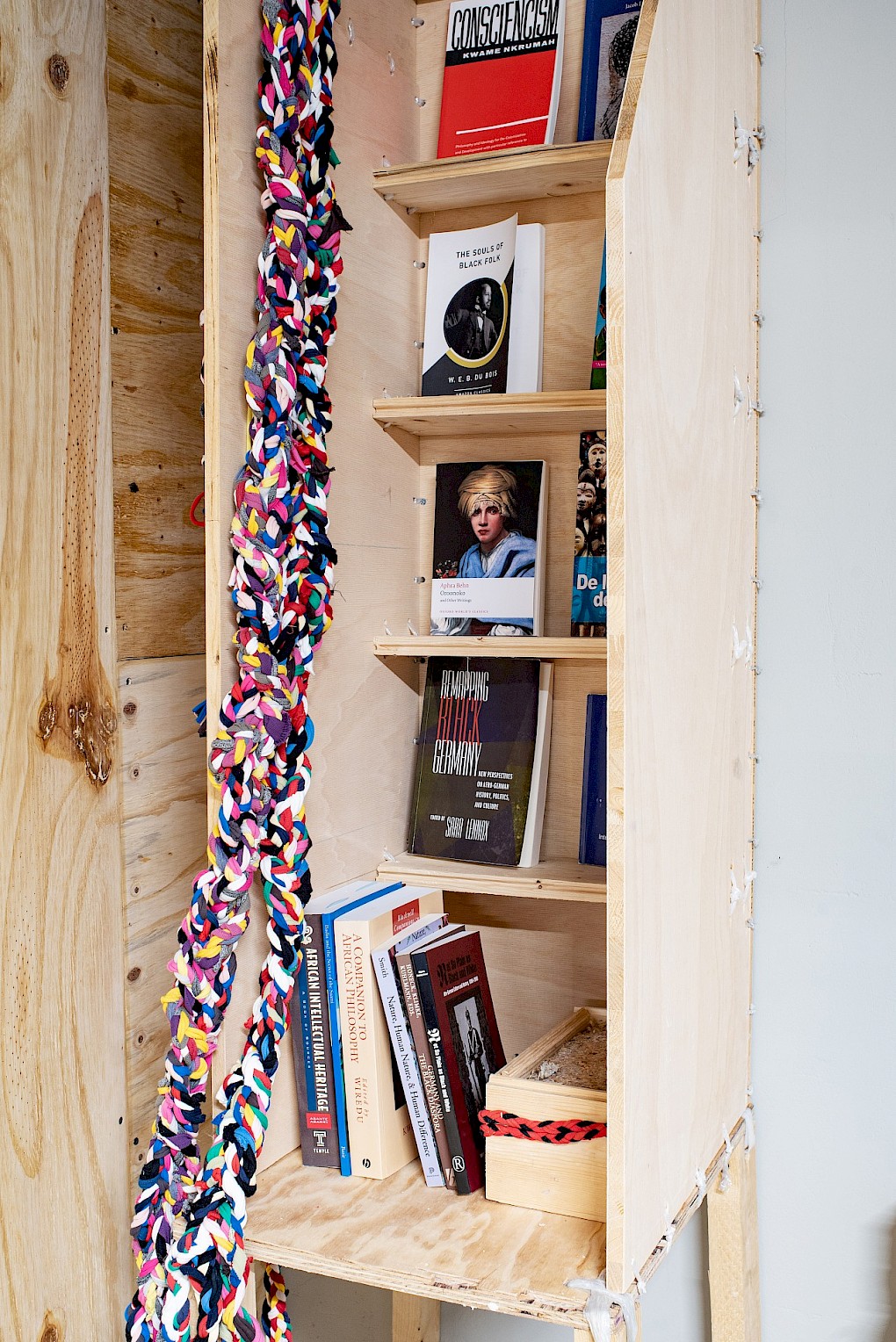
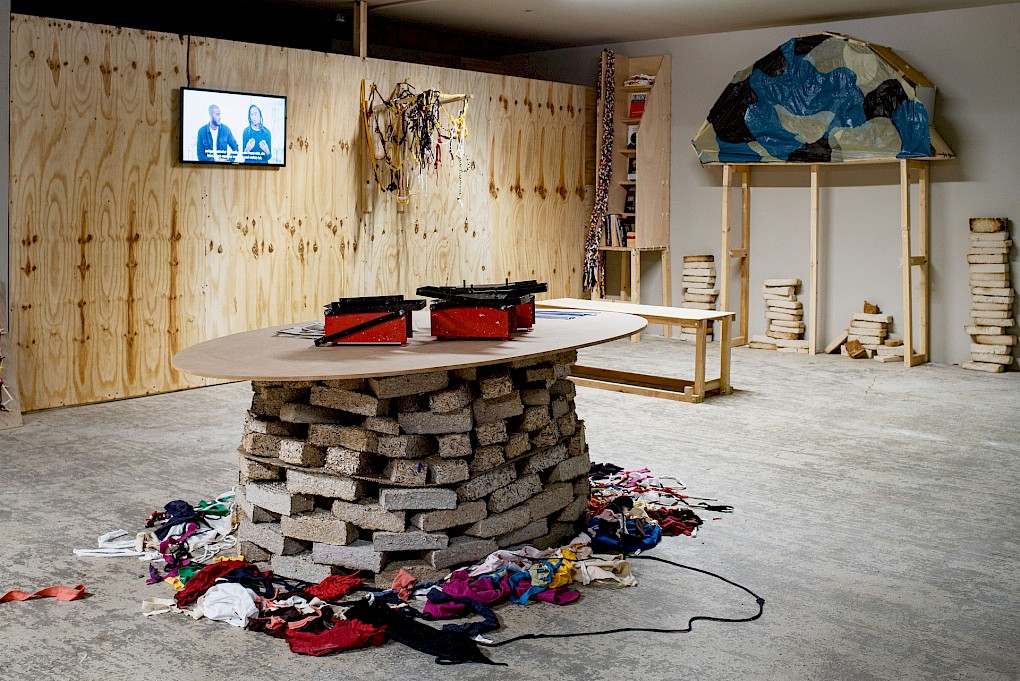
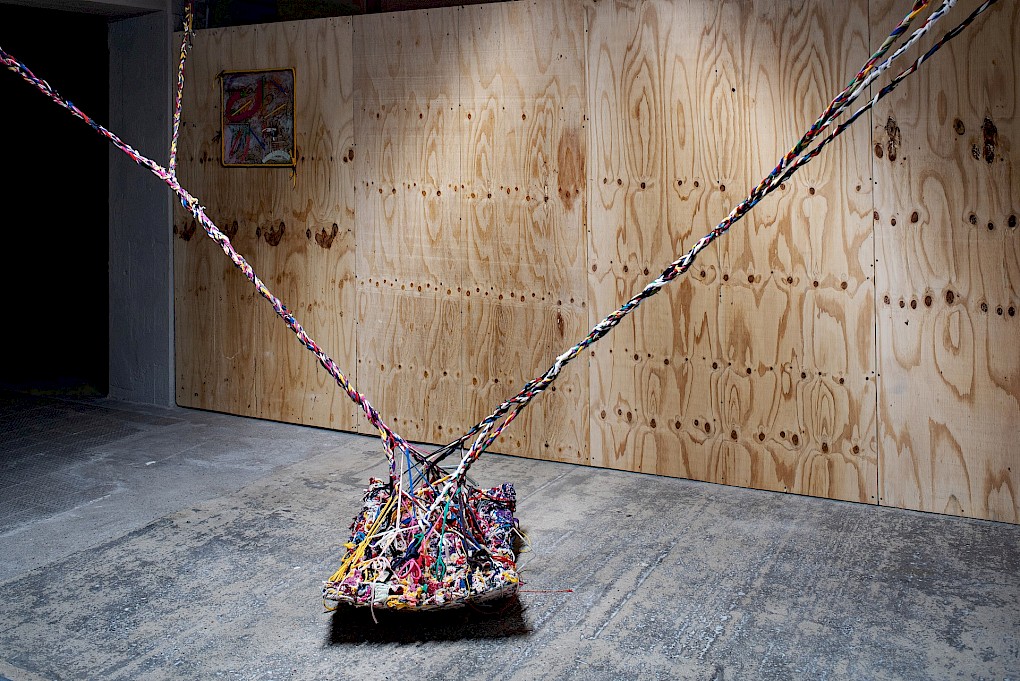
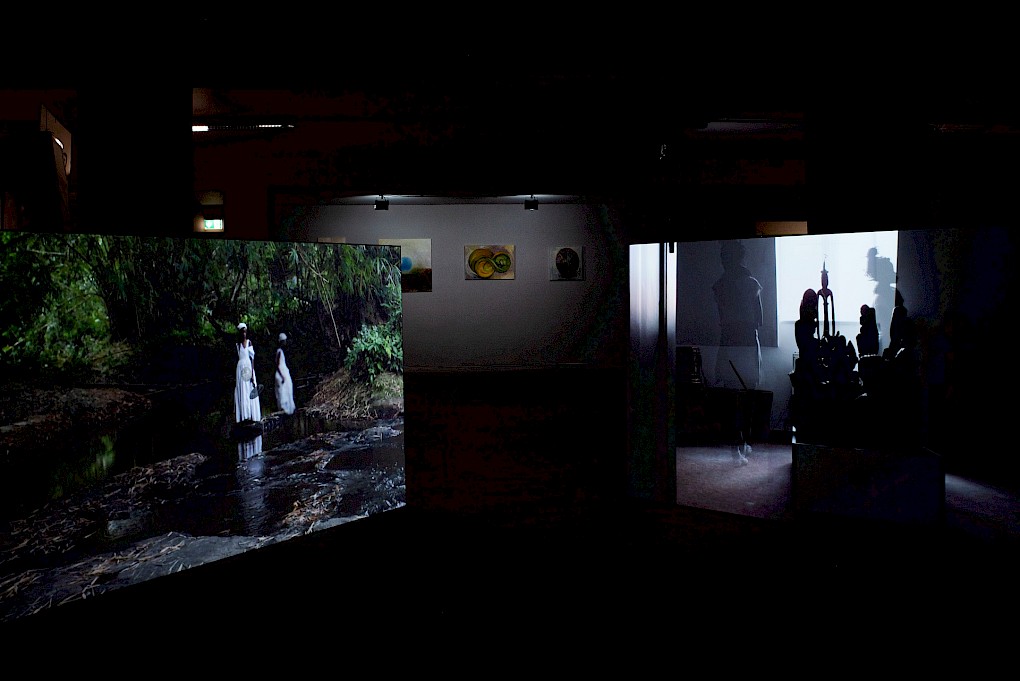
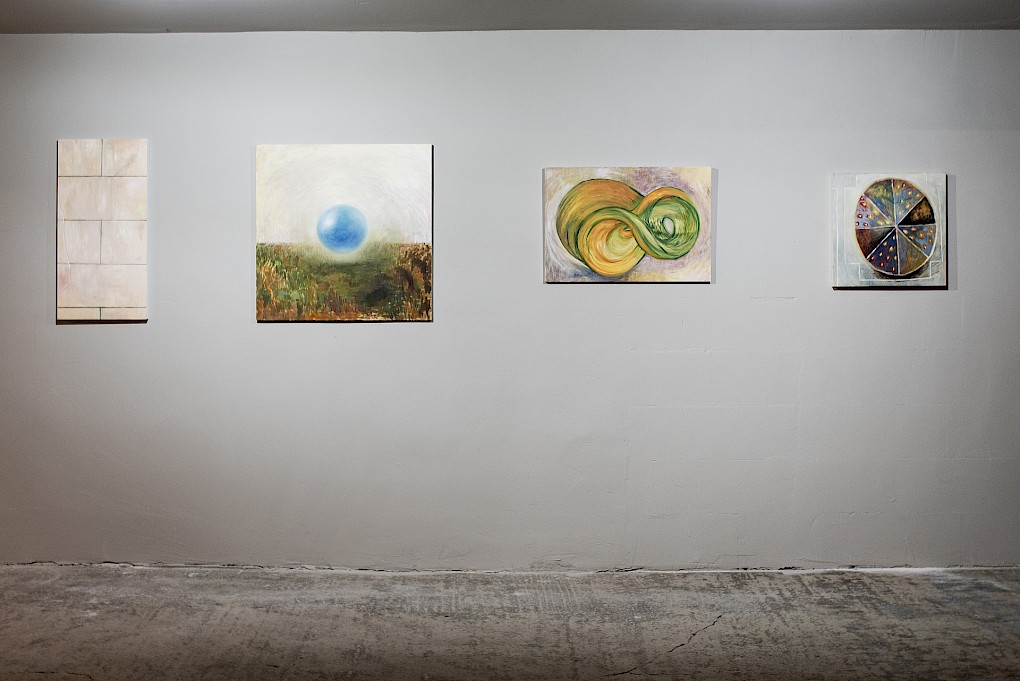
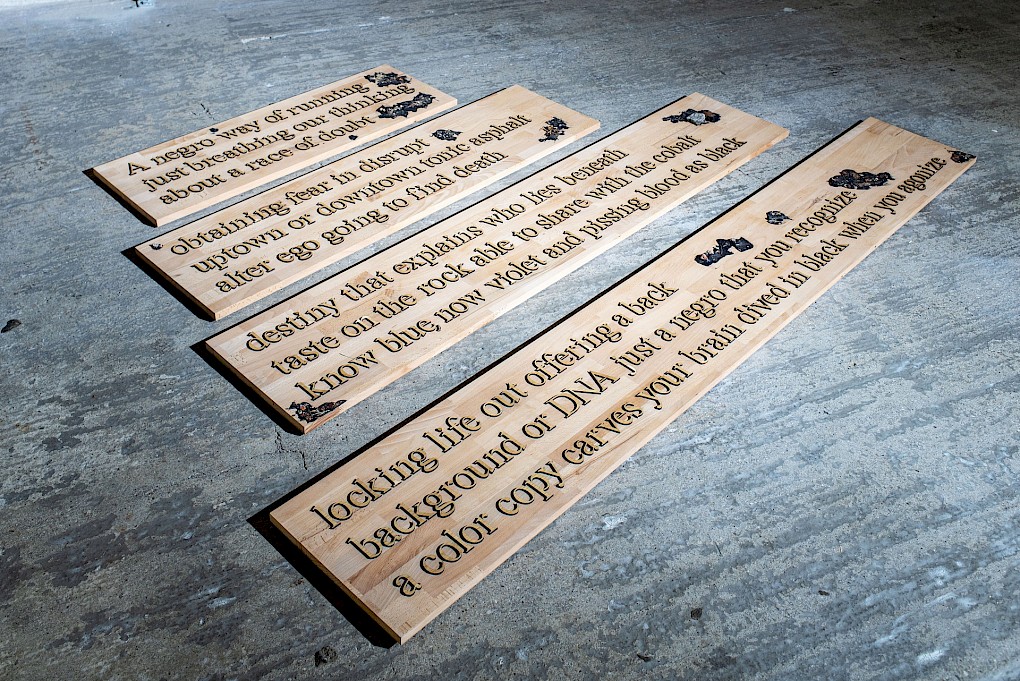
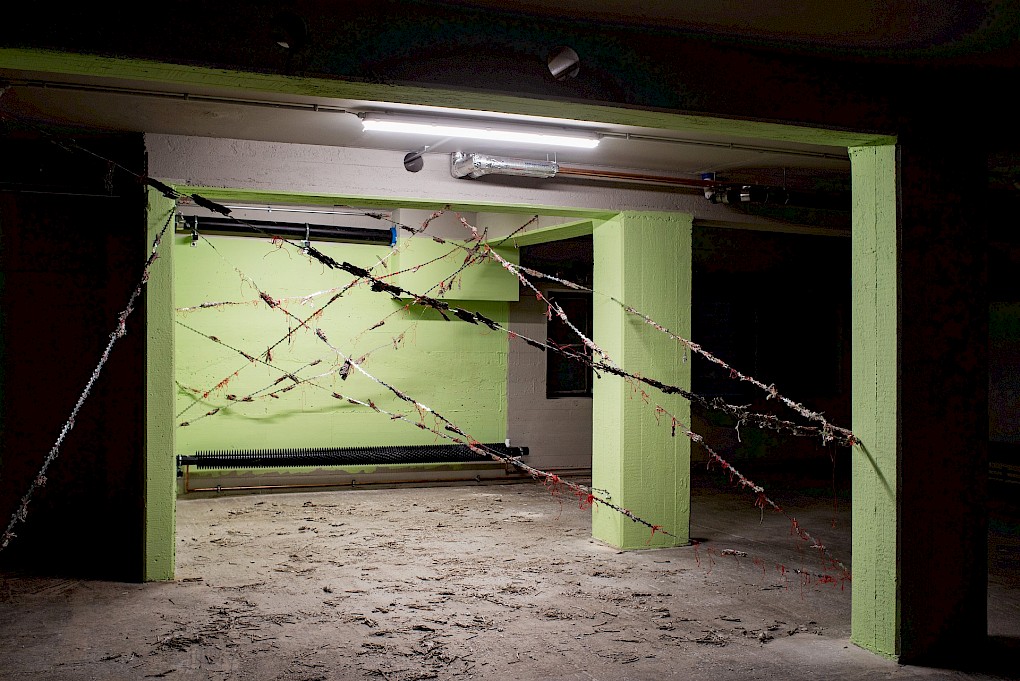
In another form, RESOLVE Collective too have tackled the aporias, gaps, and contradictions that shaped Amo’s life, philosophical oeuvre, and reception of his work. The resulting project Programming Im/Passivity (2020) attempts to translate Amo’s theoretical positions into sensory and artistic processes, with the observers becoming involved as active participants in a workshop-library environment. Bernard Akoi-Jackson’s contribution is a song dedicated to Anton Wilhelm Amo, the lyrics of which were translated by Rahinatu Taiba Ibrahim into Nzema language. The work deals with the period of Amo’s life after his return to Ghana in 1747 and his dedication to gardening herbs.
With a room plan made of barbed tape and treated fabrics, Benisiya Ndawoni II (2020) by Lungiswa Gqunta addresses structural violence, migration, and the forced movement of Black people. Questions of exclusion and everyday discrimination are likewise the starting point for the Olivier Guesselé-Garais poem “Their Eyes Were Watching Cop” (2015/2020), here reinterpreted in the form of an installation. Claudia Martínez Garay assembles drawings, prints, and paintings into a visual narrative that links back to heritage, displacement, and racism while also referring back to one-sided definitions of modernity and the problematic relationship of Black and Brown bodies to (cultural) institutions. These are issues that have also motivated Patricia Kaersenhout in her artistic and activist practice for many years. As part of the exhibition, Kaersenhout is showing the series While we Were Kings and Queens (2020), in which she examines the trauma of colonial oppression that stands in flagrant contradiction to the proclaimed ideals of the Enlightenment.
In his multimedia installation Decolonizing Knowledge (2020), Adjani Okpu-Egbe bridges the gap between Amo’s work, person, and a proposed alternative canon developed in collaboration with renowned thinkers, academics, and artists.
Direct connections to Anton Wilhelm Amo’s philosophical writings are also found in new works by Antje Majewski and Theo Eshetu. Majewski’s Die Apatheia der menschlichen Seele (2020) takes individual imaginations of the soul and translates them into painting via Amo’s ideas; Amo himself is able to “speak” via quotations in a video work by Eshetu. That Anton Wilhelm Amo’s history is a special but by no means an isolated case is made clear in the 2009 cyanotype series Good Morning Prussia by Jean-Ulrick Désert, which recalls the fate of one of Amo’s contemporaries.
On the initiative of architect Konrad Wolf, SAVVY Contemporary will itself become the Anton Wilhelm Amo Center (2020) for the duration of the exhibition, reflecting on processes of strategic renaming.
The performance collective andcompany&Co. presents a video readaptation of their lecture performance Black Bismarck revisited (again) that takes the Africa Conference as a starting point for tracing the consequences of colonialism. The work was produced in collaboration with Staatstheater Braunschweig.
The exhibition is accompanied by a public program, which will partly take place online due to current circumstances. A publication edited by Ndikung, Hillgärtner and Kaczmarek (Mousse Publishing, Kunstverein Braunschweig) entailing essays by Anton Wilhelm Amo, Seloua Luste Boulbina, Victor Uredo Emma-Adamah, Paulin J. Hountondji, Jule Hillgärtner & Nele Kaczmarek, Jota Mombaça, Bonaventure Soh Bejeng Ndikung, Peggy Piesche, and Justin E.H. Smith will be launched at the finissage of the Berlin leg of THE FACULTY OF SENSING – Thinking With, Through, and by Anton Wilhelm Amo.
ARTISTIC DIRECTion and Concept Bonaventure Soh Bejeng Ndikung
Co-curators Jule Hillgärtner, Nele Kaczmarek
Curatorial Support Kelly Krugman
Production Billy Fowo, António Pedro Mendes
MANAGEMENT Lema Sikod, Lynhan Balatbat-Helbock, Jörg-Peter Schulze
COMMUNICATIONS Anna Jäger
Graphic DESIGN Juan Pablo García Sossa
Handout Melina Sofia Tsiledaki
TECH Bert Günther
LIGHT Catalina Fernandez
Photos Raisa Galofre
Video Bona Bell
FUNDING The project at Kunstverein Braunschweig was funded by the Kulturstiftung des Bundes.
THANKS Our gratitude to the Kunstverein Braunschweig, namely Jule Hillgärtner, Nele Kaczmarek, Franz Hempel and Raoul Klooker, for their support.
Visual Quote by Anton Wilhelm Amo, Design by Juan Pablo García Sossa
